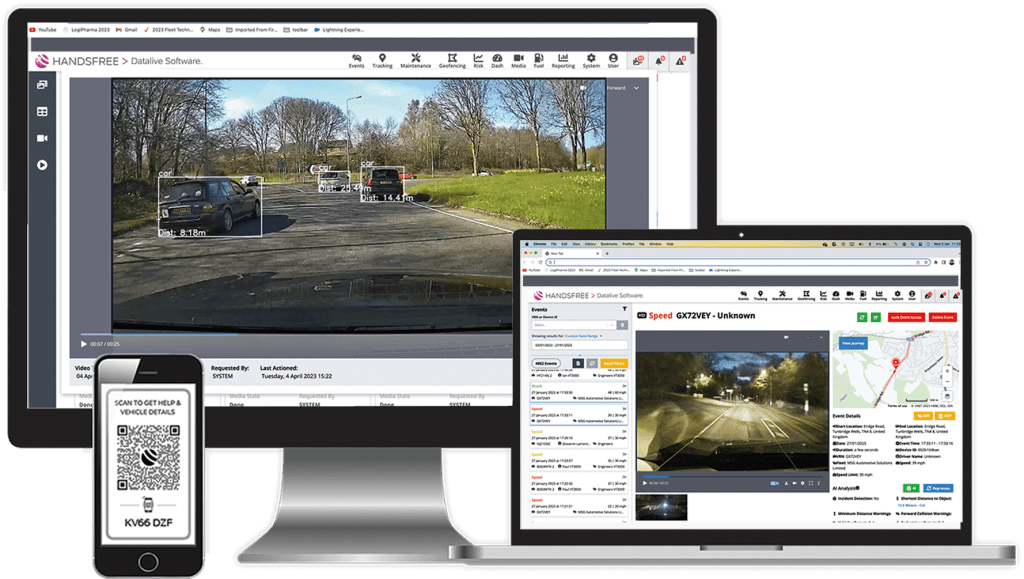Safety culture isn’t just putting policies in place. It is the day-to-day behaviours, habits, and decisions that keep your fleet safe. For any organisation that runs a fleet of vehicles, fostering this kind of culture is essential, not only to reduce risk but also to drive long-term business value.
Why Fleet Safety Can’t Be Ignored
Driving for work is one of the riskiest activities. In the UK, around 29% of road fatalities and 21% of casualties involve drivers at work. Furthermore, occupational driving is second only to mining and deep-sea fishing in workplace mortality.
We know, these numbers are hard to hear. But they highlight just how serious the consequences can be when a strong fleet safety culture isn’t in place.
Beyond tragic fatalities and casualties, accidents also result in:
- Increased insurance premiums
- Vehicle downtime
- High repair and maintenance costs
- Potential legal liabilities
Building Your Fleet Safety Culture: Step-by-Step
1. Assess and Benchmark
Start with a comprehensive risk audit. Examine collision records, vehicle maintenance patterns, telematics data, fuel consumption, and insurance claims. Essentially, any information that sheds light on potential risks. Then, compare these findings to industry benchmarks to establish a performance baseline.
2. Set Clear Goals and Policies
Establish clear and measurable fleet safety objectives, such as reducing preventable collisions, improving driver behaviour, or lowering vehicle downtime. Once defined, communicate these goals transparently to all drivers.
Effective communication is crucial, not only to ensure understanding but also to prevent reluctance when introducing new training programs, safety policies, or added responsibilities. Engaging drivers early and explaining the benefits of these changes can make implementation smoother.
3. Implement Technology and Training
Invest in driver-facing and forward-facing cameras, AI pedestrian detection cameras, and telematics software. These technologies help prevent risky behaviour before it leads to incidents. To maximise their effectiveness, implement a structured training programme that educates drivers on how the technology works.
4. Communicate and Reinforce
Make sure any policy updates are clearly communicated to your team. Go a step further by recognising and celebrating safety successes. Lightfoot software can elevate your fleet management by engaging drivers through in-cab displays, performance league tables, and reward systems. This approach can lead to up to 40% fewer at-fault accidents while making safety initiatives more motivating.
We even currently use Lightfoot ourselves to keep our engineers safe as they travel across the country, installing our vehicle technology into our customer’s fleets.
5. Review and Evolve
Regularly track telematics data, incidents, training outcomes, and maintenance. Use insights to update policies and refresh training as needed.
Four Pillars of a Strong Fleet Safety Culture
1. Leadership Commitment and Communication
Safety starts at the top. Senior leaders must lead by example, embedding safety into the company’s values. When drivers understand that safety matters most, it fosters responsibility and engagement.
2. Daily Checks and Proactive Maintenance
Vehicle walkarounds, checking tyres, lights, fluid levels, brakes, and reporting defects are essential. Regular inspections prevent breakdowns, reduce downtime, and enforce a safety mindset.
Embed these checks into your driver’s daily routines and utilise software like our Datalive ‘Check It’ module to digitalise this activity. Allowing managers to efficiently review these reports and schedule vehicles in for the appropriate repairs.
3. Data-Driven Behaviour Monitoring
Driver Safety Monitoring (DSM) cameras can identify dangerous behaviour and bad habits such smoking, eating, mobile phone use, distracted driving, and more. Pair this with powerful telematics software to pick up on speeding, harsh braking, harsh cornering, and near misses.
These systems enable precise analysis, root cause diagnosis, and targeted interventions. Add in AI-powered filtering software (such as our Datalive ‘Filter It’ module) to remove false positive events which can be generated by potholes and bumps in the road. This will save manual validation, leaving only critical events for viewing.
4. Targeted Training and Follow‑Up
Training programmes based on individual risk profiles (from e‑learning to one-on-one coaching) create measurable results. Furthermore, reinforcing learning with post-training telematics reviews and feedback helps to break the cycle of “repeat offenders”.
The Business Benefits of a Strong Fleet Safety Culture
- Lower costs: fewer accidents mean lower insurance, repair, and downtime costs.
- Enhanced reputation: award-winning fleets stand out with a safer, more responsible image.
- Legal compliance and reduced liability: meet or exceed national safety standards to avoid fines and build trust.
- Stronger employee loyalty: drivers feel valued when safety is a priority, leading to better morale and retention.
A robust fleet safety culture isn’t built overnight. It’s a journey of leadership, data-driven insights, technology, training, and continuous improvement. By embedding safety into everyday operations, organisations protect their people and ultimately optimise their bottom line.
Ready to Elevate Your Fleet Safety?
We offer the right mix of technology and software to help fleets like yours to tackle this ongoing challenge.
Contact our team on 0161 864 6440 or visit our Datalive Software webpage to find out more about our telematics, connected AI cameras and digital fleet compliance modules here.





